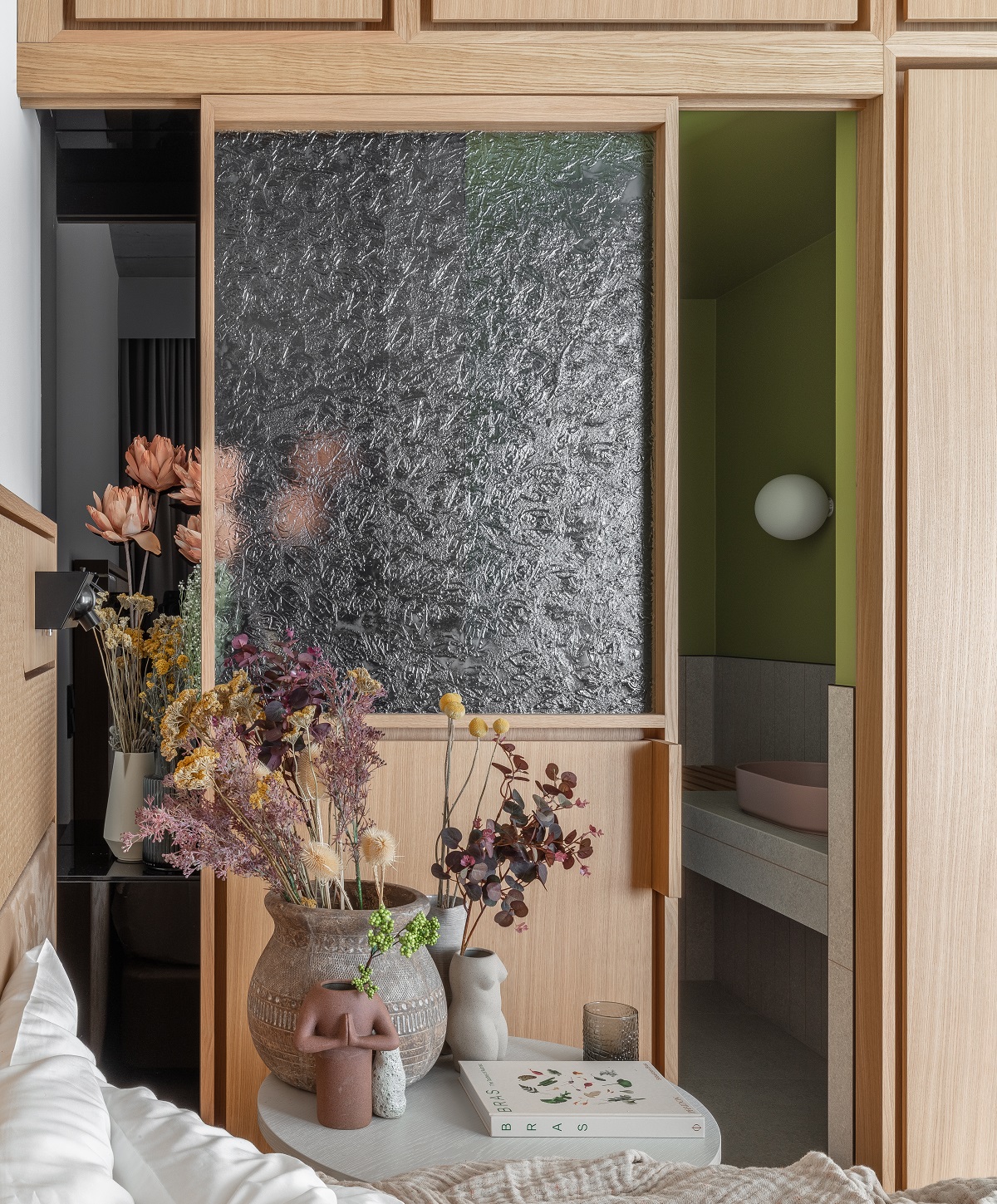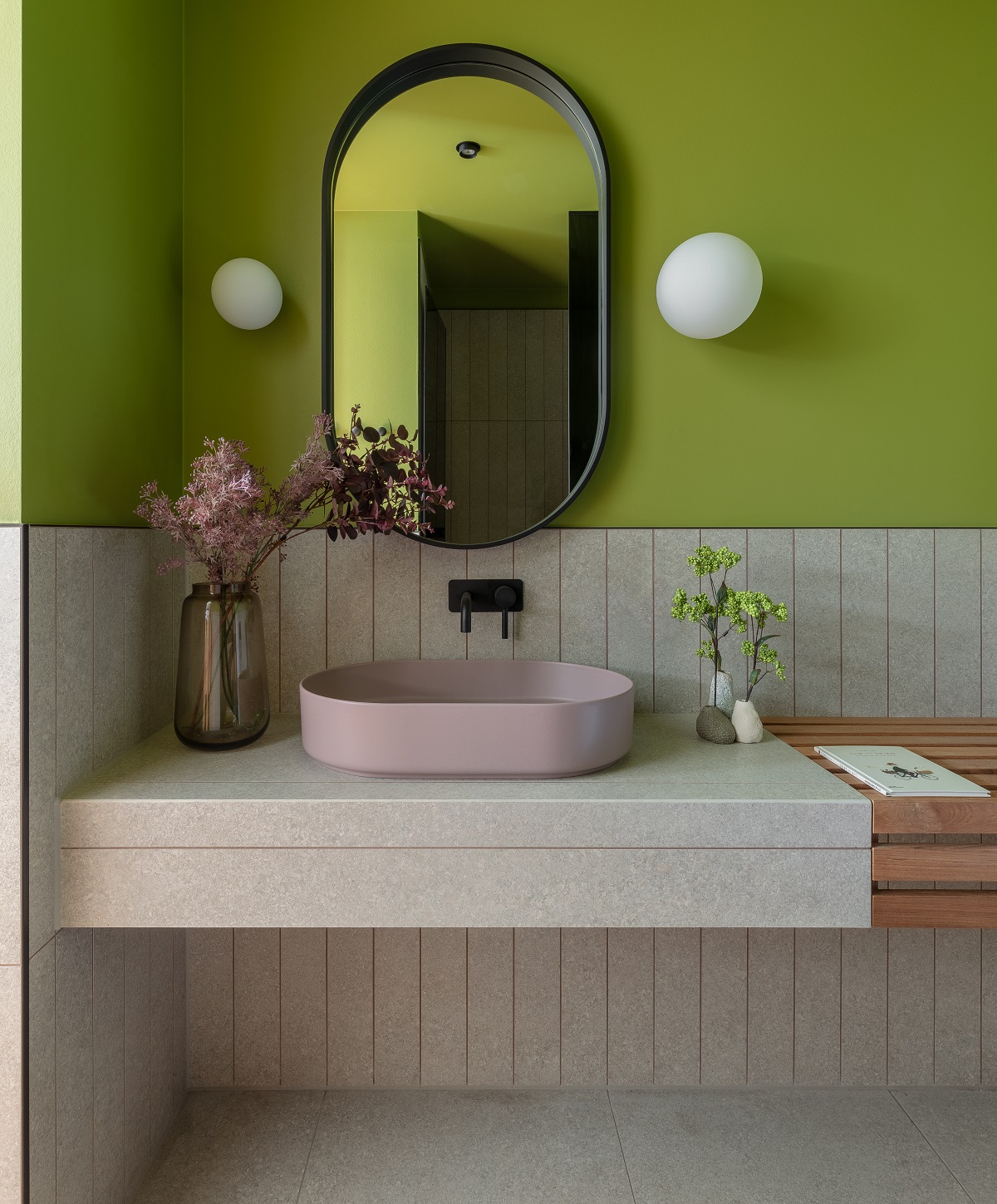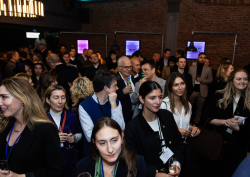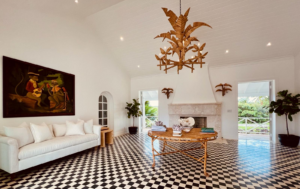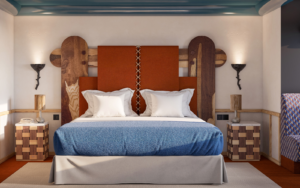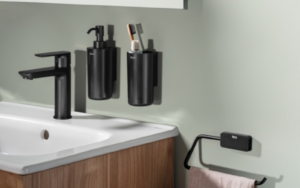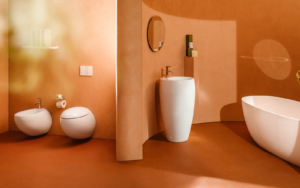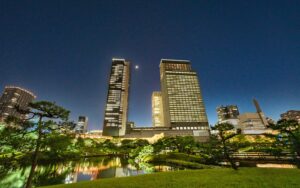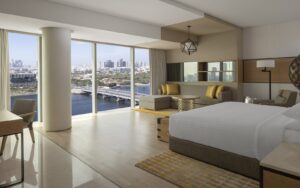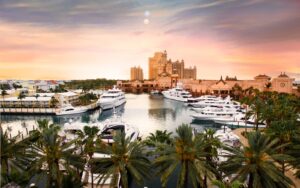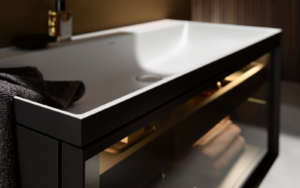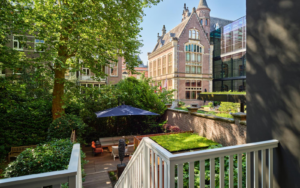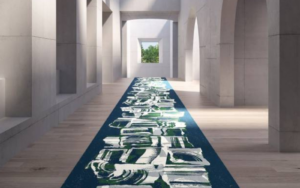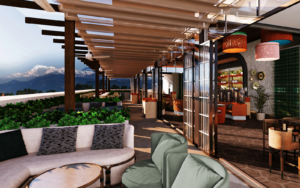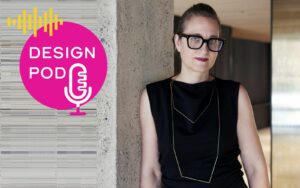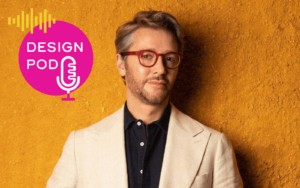Lifestyle aparthotel brand Locke has opened the fourteenth property in its portfolio and its first property in Berlin. With the design by Grzywinski+Pons, we stepped inside for a closer look…
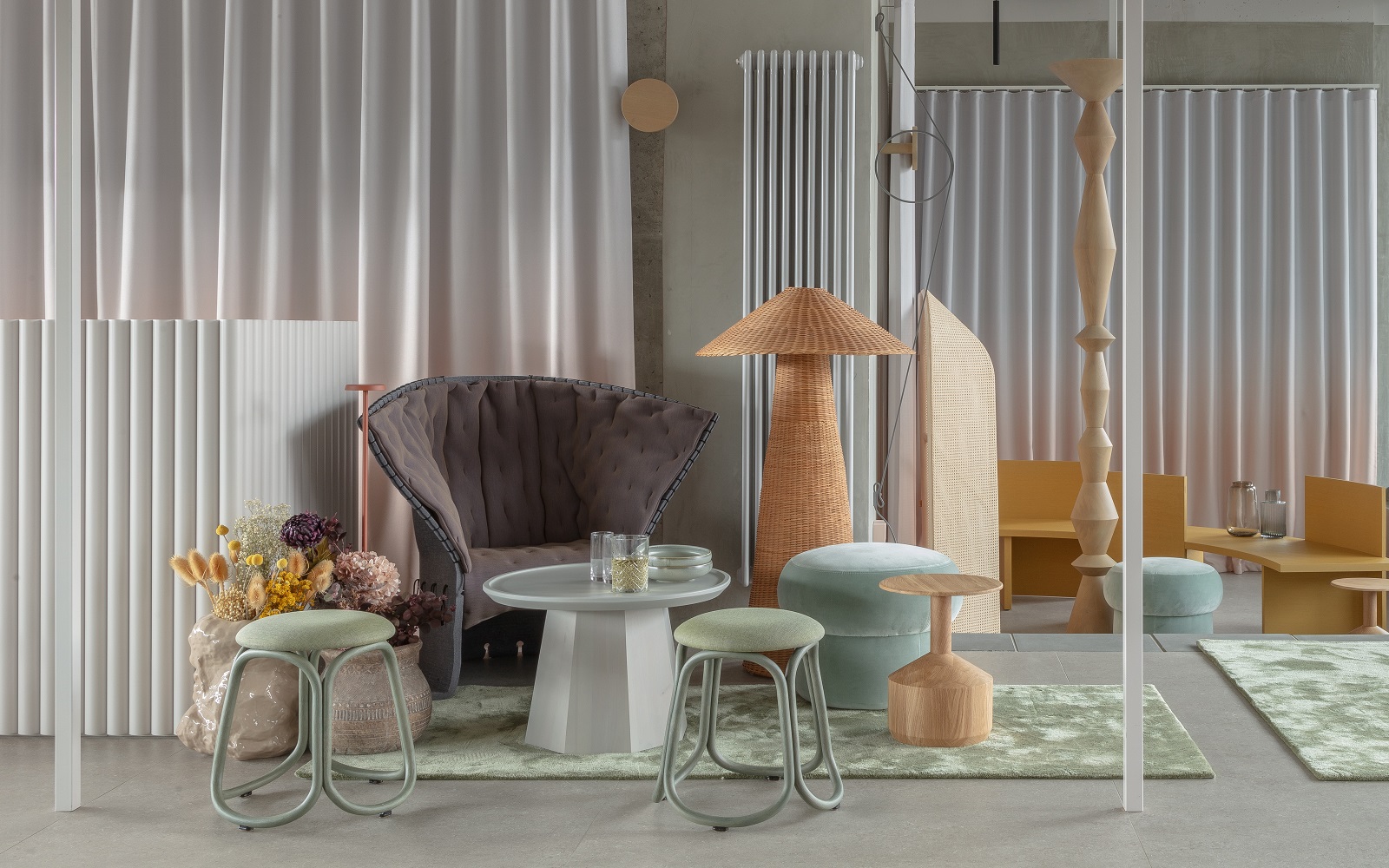
Marking the third Locke opening in Germany, Locke at East Side Gallery offers breath-taking views across the city’s skyline and the River Spree and is situated within Berlin’s trendiest inner-city districts; Friedrichshain, Kreuzberg and Mitte. The new opening comprises of 176 sleek studio apartments equipped with kitchenettes and living areas, with many also having access to a private balcony with river or skyline views.

Image credit: Nicholas Worley
“We are thrilled to be opening our first Locke in Berlin, a city of innovation and creativity,” said Stephen McCall, Chief Executive Officer. “Locke at East Side Gallery has been a very special project for us and the finished result is an incredible offering. With an exciting partnership in place with audiophile bar and restaurant ANIMA, spectacular views across the River Spree and located in a great location within the trendy inner-city districts Friedrichschain, Kreuzberg and Mitte, we are excited to open the doors and welcome people to Locke at East Side Gallery.”

Image credit: Nicholas Worley
Locke at East Side Gallery also features a complimentary co-working area for guests and locals to enjoy coffee shop, audiophile bar and restaurant ANIMA, which will introduce new immersive ways of experiencing music in the German capital. The property houses a flexible meeting and events space that includes a rooftop terrace, as well as a gym on the eighth floor, with floor to ceiling windows and views overlooking Berlin’s Mediaspree.
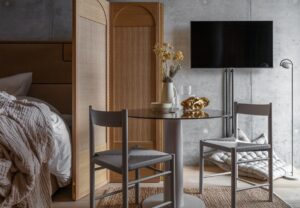
Image credit: Nicholas Worley
Designed by Matthew Grzywinski of Grzywinski+Pons, the property takes its design cues from its surroundings – most notably the former Berlin Wall, River Spree and neighbouring parks. Each apartment combines sophisticated neutral tones, natural textures and raw concrete with pops of playful colour. Within the rooms themselves, walls are composed of timber panelling, with kiln-formed glass inspired by the surface of the Spree River acting as a partition to the bathroom.
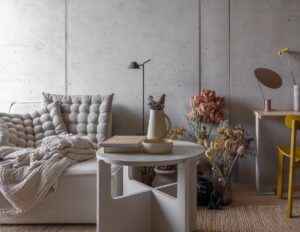
Image credit: Nicholas Worley
The furniture in the rooms exude warmth and texture with turmeric chairs, pastel mirrors and heavily braided grass rugs juxtaposed with suede and rattan floor screens and bedheads. The bathrooms feature back-painted black glass, while walls and ceilings feature exposed structural concrete softened with a powdery finish. Hand-scraped wood floors complement the use of timber and textured glass.
Areas on the ground floor including the cafe, bar and restaurant ANIMA, reception lounge and co-working spaces are connected (in a subtle nod to the vestiges of the Berliner Mauer) by the use of non-continuous walls, creating implicit ‘neighbourhoods’ in the space. Built-in seating and planters are fabricated from locally-sourced bricks comprised of recycled sand and lime, while furnishings follow a cohesive palette of timber, cane, fabric and cord, surrounded by verdant vegetation spilling out of planters and cascading from the ceiling.
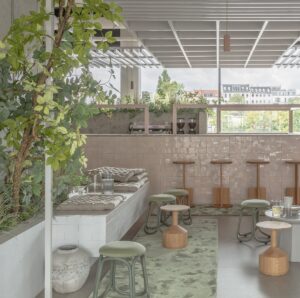
Image credit: Nicholas Worley
ANIMA, an audiophile bar and restaurant, combines gastronomy with music. Intended as a dedicated space for music lovers, the concept is inspired by Japan’s ‘Kissaten’ hi-fi cafes predating affordable home stereos. Focused on providing the highest standards across dining, drinking and hi-fi audio experience, ANIMA allows guests to connect to music and one another within an unpretentious, friendly, warm and elegant setting. During the week, an extensive in-house record collection and ANIMA Radio live stream provide the soundtrack for guests and locals to enjoy, while on weekends music is selected by the finest local and occasionally international selectors.
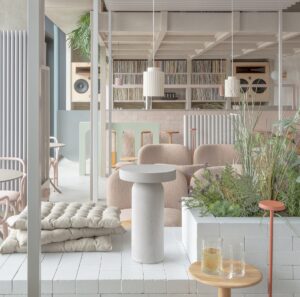
Image credit: Nicholas Worley
Born from a desire to share, exchange and provide a place to bring people together, ANIMA’s concept is reflected in their tapas inspired food and drink offering. Designed for sharing, the menu features fresh, local and seasonal products that combine childhood favourites and street food influences with a touch of Mediterranean style. A carefully selected assortment of independent, non-corporate, Berlin-based partners provide special drinks, including a wine selection by Ritual Wine, mezcal by Algavera, sake by Sake38, coffee from Bonzana and tea by Yoshi EN.
“It’s important to keep the true nature of ingredients and introducing creative twists to culinary traditions is vital,” said Andrea Lannicella, Head Chef, ANIMA. “Berlin is an inspiring setting that encourages exploration and experimentation in the field of food and culture and this will be reflected in our offerings at ANIMA.”
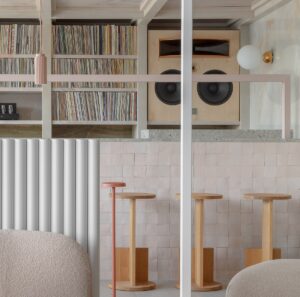
Image credit: Nicholas Worley
In an exciting move that reflects the cultural heritage of Berlin, Locke has partnered with unisex brand Fade Out Label to provide uniforms for the team at Locke at East Side Gallery. Local fashion brand Fade Out has collaborated with legendary Berlin Wall artist Mirta Domacinovic to create a uniform collection which features symbols of hope, new beginnings and Berlin’s resilience as a city to turn a new leaf. Committed to sustainable, timeless design approach, they have utilised deadstock to repurpose a collection that would otherwise have ended up in a landfill.
Main image credit: Nicholas Worley

